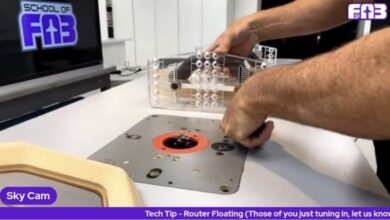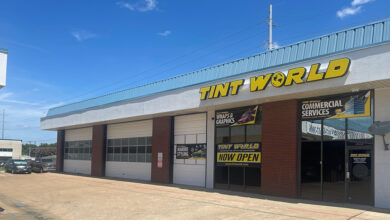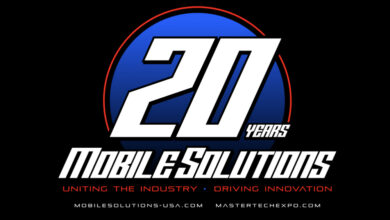Inside the Team Developing Ford’s Next Generation of Electric Vehicles
EDITOR’S NOTE: The following article was penned by Darren Palmer, Ford Team Edison global product development director
…
You’d think after 28 years of working for the same company that nothing would surprise me. I’ve been fortunate enough to work for Ford across many amazing teams on many exciting assignments, most recently leading development of the next-generation Mustang.
But earlier this year I received a call that would challenge everything I thought I knew about Ford and our future. I was asked to lead product development for a brand-new team, Ford Team Edison, focusing exclusively on electrified vehicles for both Ford and Lincoln. And to be successful, this new team had to be willing to challenge every truth and every process we had developed over the course of our careers.
Having just taken delivery of a Shelby GT350R, those in the dark about electric vehicles might think that they chose the wrong guy in that I’m a Mustang enthusiast. But as my team and I have quickly found out, the new generation of electric vehicles is just as exciting-only different. Different can be good. Very good. And it’s opened our eyes to a whole new Ford.
The stakes are high. The challenge higher. We are being tasked to set the future trajectory of the company, and Team Edison is up for that challenge.
With Ford, I’ve had the opportunity to work around the globe-in Germany, India, China, South America and my home in the U.K.-and this new role with Ford Team Edison has allowed me to fully leverage my global experience.
The electric vehicle market overall is accelerating at an exponential rate, with each individual market presenting its own unique challenges. It’s an exciting time to be bringing forward a winning portfolio of electrified vehicles.
My team and I are both proud of and energized by the company’s $11 billion investment to bring 16 fully electric vehicles within a global portfolio of 40 electrified vehicles through 2022. All of us here have unknowingly prepared for this our entire careers.
We’re a dedicated team who has been lucky enough to be chosen to pilot the future of Ford from an old factory in the heart of Corktown, Detroit’s oldest neighborhood. It’s open, airy and encourages collaboration. But don’t be fooled that new desks and an open office floor plan alone creates change. It’s the shift in mindset that is truly creating change at Ford, and giving license to the team to operate in a completely different way.
Change doesn’t happen overnight, but for our team, things are moving quickly. The team is cross-functional, and on any given day you can find yourself sitting next to someone working to market our electric vehicles, someone looking at the profit potential of our electric vehicles, or be on a coffee break with someone involved in our charging strategy.
We’ve been tasked to move fast and come together quickly to solve common problems-what we like to call “cross-functional sprints,” and we’ve embraced a “no stripes mentality” to encourage that ideas come from different viewpoints.
The other big change is the human-centric approach in everything we do. There isn’t a ton of historical data to look at for electric vehicles-meaning you can’t just look back at what happened before and use that as inspiration for what to do next. The world is fundamentally shifting, and we have to listen more than ever to really understand our customers and how they are evolving.
For example, on a recent trip to Shanghai, we looked at how extended families use their vehicles. We all wondered what on earth we were doing watching families get in and out of a three-row vehicle.
I, of course, assumed that kids would go right back in the third row-but I was wrong. In China, children usually go straight to the second row, as it’s deemed the best place since the child represents the future. The grandmother generally rides up front and the grandfather climbs into the back.
Goes to show you can-and should-always be learning something new that can be applied to improve the customer experience. We can take these insights and ensure we’re really designing vehicles in a way that is human-centered and right for each unique market.
Prototypes also play a big part in what we’re doing, allowing us to pivot along the way to deliver the best products and services possible. Having the flexibility to learn and iterate is a huge enabler.
What I’ve come to learn is that design has to be intuitive. I only have to watch my 6-year-old twins play with my iPhone to know what intuitive design looks like. Gone are the days of shiny, expensive prototypes. Customers don’t care about that-a low-fidelity cardboard prototype is enough to get feedback.
This way of thinking is all part of our new, fast-moving team mantra. In fact, as a reminder of this, I’ve kept one of our first prototypes of the infotainment system for one of our new electric vehicles. It’s literally cardboard, with a piece of a plastic cup stuck to it with tape. What I’m trying to demonstrate is that innovation does not have to be expensive. It has to be smart. And I’m surrounded by some of the smartest people I’ve ever worked with.
Electric vehicle customers are buying into the future and our team is 100 percent focused on not only delivering vehicles they will love, but providing an entire electric vehicle ecosystem that works flawlessly. It’s exciting to know that my stint leading development of the next-generation Mustang actually comes full circle as we get ready to launch our electric Mustang-inspired utility. I, for one, can’t wait to have one-side-by-side-with my Shelby GT350R.



